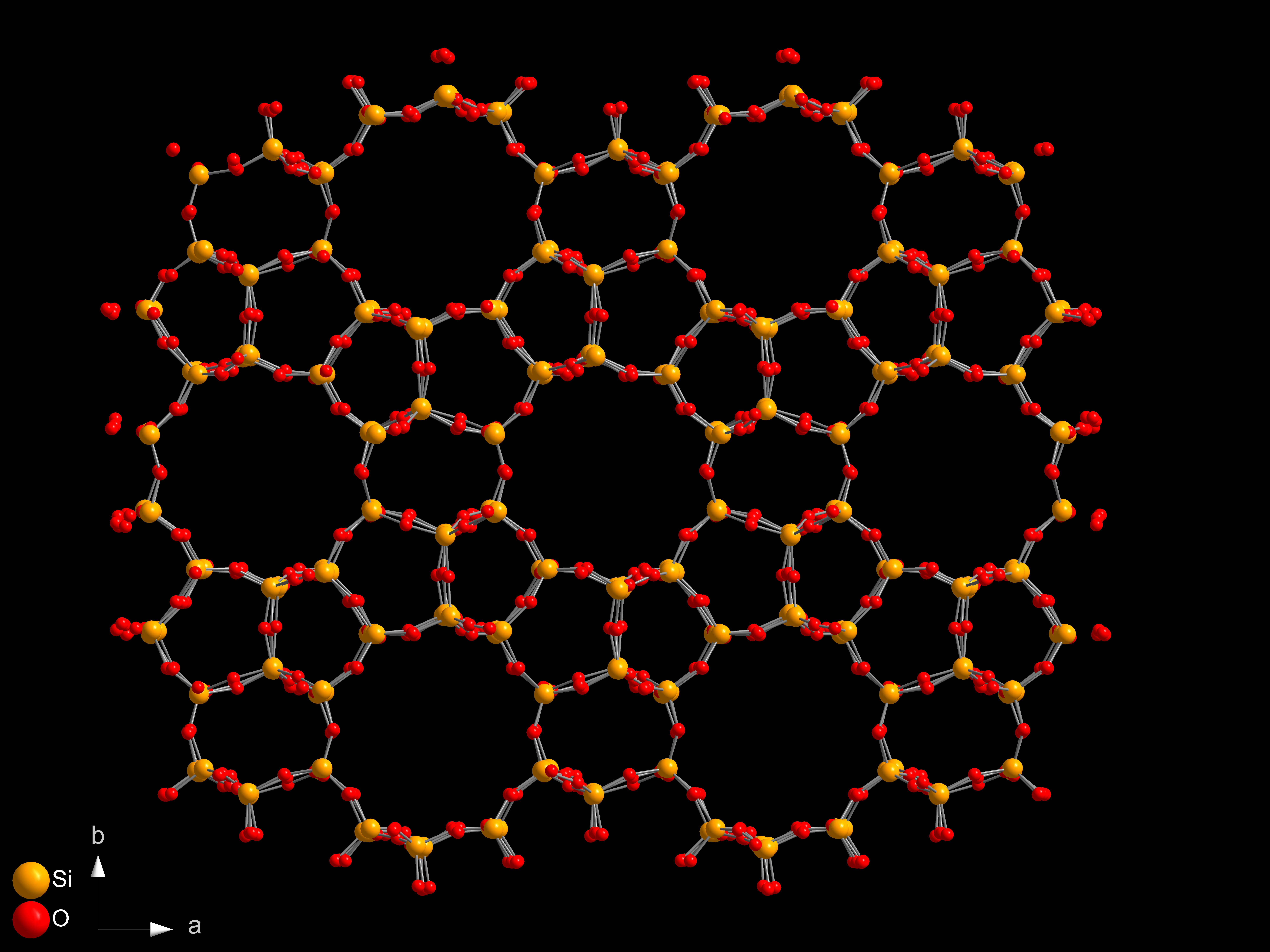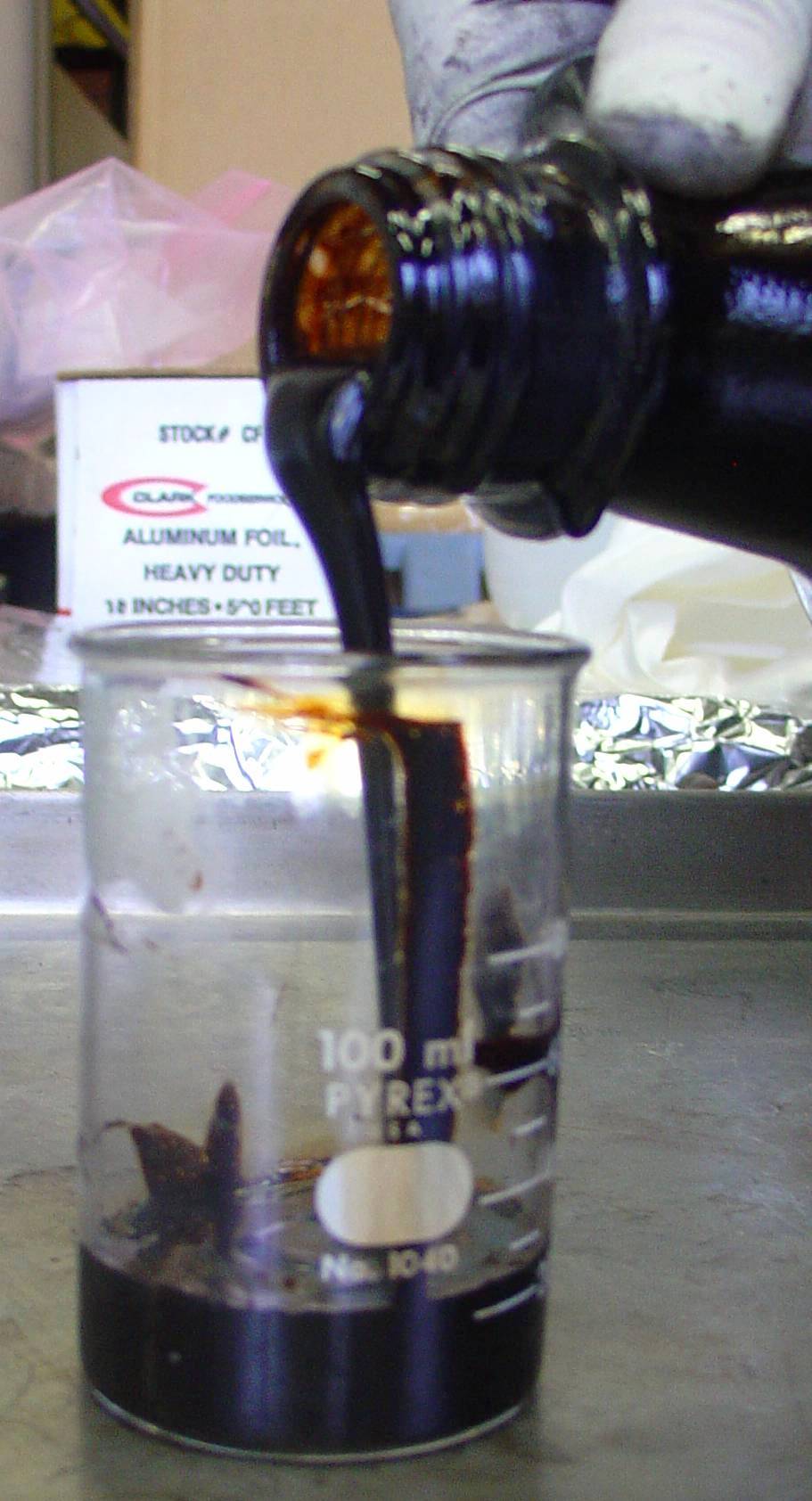|
Xylene
In organic chemistry, xylene or xylol (; IUPAC name: dimethylbenzene) are any of three organic compounds with the formula . They are derived from the substitution of two hydrogen atoms with methyl groups in a benzene ring; which hydrogens are substituted determines which of three structural isomers results. It is a colorless, flammable, slightly greasy liquid of great industrial value. The mixture is referred to as both xylene and, more precisely, xylenes. Mixed xylenes refers to a mixture of the xylenes plus ethylbenzene. The four compounds have identical empirical formulas . Typically the four compounds are produced together by various catalytic reforming and pyrolysis methods. Occurrence and production Xylenes are an important petrochemical produced by catalytic reforming and also by carbonization, coal carbonisation in the manufacture of coke (fuel), coke fuel. They also occur in crude oil in concentrations of about 0.5–1%, depending on the source. Small quantities occur ... [...More Info...] [...Related Items...] OR: [Wikipedia] [Google] [Baidu] |
P-Xylene
''p''-Xylene ( ''para''-xylene) is an aromatic hydrocarbon. It is one of the three isomers of dimethylbenzene known collectively as xylenes. The ''p-'' stands for ''para-'', indicating that the two methyl groups in ''p''-xylene occupy the diametrically opposite substituent positions 1 and 4. It is in the positions of the two methyl groups, their arene substitution pattern, that it differs from the other isomers, ''o''-xylene and ''m''-xylene. All have the same chemical formula C6H4(CH3)2. All xylene isomers are colorless and highly flammable. The odor threshold of ''p''-xylene is 0.62 parts per million (ppm). Production The production of ''p''-xylene is industrially significant, with annual demand estimated at 37 million tons in 2014, and still on the increase. ''p''-Xylene is produced by catalytic reforming of petroleum naphtha as part of the BTX aromatics (benzene, toluene and the xylene isomers) extracted from the catalytic reformate. The ''p''-xylene is then separated out ... [...More Info...] [...Related Items...] OR: [Wikipedia] [Google] [Baidu] |
M-Xylene
''m''-Xylene ( ''meta''-xylene) is an aromatic hydrocarbon. It is one of the three isomers of dimethylbenzene known collectively as xylenes. The ''m-'' stands for ''meta-'', indicating that the two methyl groups in ''m''-xylene occupy positions 1 and 3 on a benzene ring. It is in the positions of the two methyl groups, their arene substitution pattern, that it differs from the other isomers, ''o''-xylene and ''p''-xylene. All have the same chemical formula C6H4(CH3)2. All xylene isomers are colorless and highly flammable. Production and use Petroleum contains about 1 weight percent xylenes. The ''meta'' isomer can be isolated from a mix of xylenes by the partial sulfonation (to which other isomers are less prone) followed by removal of unsulfonated oils and steam distillation of the sulfonated product. The major use of ''meta''-xylene is in the production of isophthalic acid, which is used as a copolymerizing monomer to alter the properties of polyethylene terephthalate. Th ... [...More Info...] [...Related Items...] OR: [Wikipedia] [Google] [Baidu] |
BTX (chemistry)
In the petroleum refining and petrochemical industries, the initialism BTX refers to mixtures of benzene, toluene, and the three xylene isomers, all of which are aromatic hydrocarbons. The xylene isomers are distinguished by the designations ''ortho'' – (or ''o'' –), ''meta'' – (or ''m'' –), and ''para'' – (or ''p'' –) as indicated in the adjacent diagram. If ethylbenzene is included, the mixture is sometimes referred to as BTEX. The BTX aromatics are very important petrochemical materials. Global consumption of benzene, estimated at more than 40,000,000 tons in 2010, showed an unprecedented growth of more than 3,000,000 tons from the level seen in 2009. Likewise, the para-xylene consumption showed unprecedented growth in 2010, growing by 2,800,000 tons, a full ten percent growth from 2009. [...More Info...] [...Related Items...] OR: [Wikipedia] [Google] [Baidu] |
Petrochemical
Petrochemicals (sometimes abbreviated as petchems) are the chemical products obtained from petroleum by refining. Some chemical compounds made from petroleum are also obtained from other fossil fuels, such as coal or natural gas, or renewable sources such as maize, palm fruit or sugar cane. The two most common petrochemical classes are olefins (including ethylene and propylene) and aromatics (including benzene, toluene and xylene isomers). Oil refineries produce olefins and aromatics by fluid catalytic cracking of petroleum fractions. Chemical plants produce olefins by steam cracking of natural gas liquids like ethane and propane. Aromatics are produced by catalytic reforming of naphtha. Olefins and aromatics are the building-blocks for a wide range of materials such as solvents, detergents, and adhesives. Olefins are the basis for polymers and oligomers used in plastics, resins, fibers, elastomers, lubricants, and gels. Global ethylene production was 190 million tonnes an ... [...More Info...] [...Related Items...] OR: [Wikipedia] [Google] [Baidu] |
ZSM-5
ZSM-5, Zeolite Socony Mobil–5 (framework type MFI from ZSM-5 (five)), is an aluminosilicate zeolite belonging to the pentasil family of zeolites. Its chemical formula is NanAlnSi96–nO192·16H2O (0 Structure [...More Info...] [...Related Items...] OR: [Wikipedia] [Google] [Baidu] |
Benzene
Benzene is an organic chemical compound with the molecular formula C6H6. The benzene molecule is composed of six carbon atoms joined in a planar ring with one hydrogen atom attached to each. Because it contains only carbon and hydrogen atoms, benzene is classed as a hydrocarbon. Benzene is a natural constituent of petroleum and is one of the elementary petrochemicals. Due to the cyclic continuous pi bonds between the carbon atoms, benzene is classed as an aromatic hydrocarbon. Benzene is a colorless and highly flammable liquid with a sweet smell, and is partially responsible for the aroma of gasoline. It is used primarily as a precursor to the manufacture of chemicals with more complex structure, such as ethylbenzene and cumene, of which billions of kilograms are produced annually. Although benzene is a major industrial chemical, it finds limited use in consumer items because of its toxicity. History Discovery The word "''benzene''" derives from "''gum benzoin''" (benzoin res ... [...More Info...] [...Related Items...] OR: [Wikipedia] [Google] [Baidu] |
Reformate
Catalytic reforming is a chemical process used to convert petroleum refinery naphthas distilled from crude oil (typically having low octane ratings) into high-octane liquid products called reformates, which are premium blending stocks for high-octane gasoline. The process converts low-octane linear hydrocarbons (paraffins) into branched alkanes (isoparaffins) and cyclic naphthenes, which are then partially dehydrogenated to produce high-octane aromatic hydrocarbons. The dehydrogenation also produces significant amounts of byproduct hydrogen gas, which is fed into other refinery processes such as hydrocracking. A side reaction is hydrogenolysis, which produces light hydrocarbons of lower value, such as methane, ethane, propane and butanes. In addition to a gasoline blending stock, reformate is the main source of aromatic bulk chemicals such as benzene, toluene, xylene and ethylbenzene which have diverse uses, most importantly as raw materials for conversion into plastics. How ... [...More Info...] [...Related Items...] OR: [Wikipedia] [Google] [Baidu] |
Singapore
Singapore (), officially the Republic of Singapore, is a sovereign island country and city-state in maritime Southeast Asia. It lies about one degree of latitude () north of the equator, off the southern tip of the Malay Peninsula, bordering the Strait of Malacca to the west, the Singapore Strait to the south, the South China Sea to the east, and the Straits of Johor to the north. The country's territory is composed of one main island, 63 satellite islands and islets, and one outlying islet; the combined area of these has increased by 25% since the country's independence as a result of extensive land reclamation projects. It has the third highest population density in the world. With a multicultural population and recognising the need to respect cultural identities of the major ethnic groups within the nation, Singapore has four official languages: English, Malay, Mandarin, and Tamil. English is the lingua franca and numerous public services are available only in Eng ... [...More Info...] [...Related Items...] OR: [Wikipedia] [Google] [Baidu] |
Auguste André Thomas Cahours
August André Thomas Cahours (1813–1891) was a French chemist and scientist whose contribution to organic chemistry was one of the greatest in history. He discovered, among other things, the processes of synthesis of several chemical molecules, including toluene, xylene, several organo-magnesiums, and derivatives of phosphine and arsine. He was a professor at the École Polytechnique and the École Centrale des Arts et Manufactures. In 1868 he was elected as a member of the Académie des sciences (chemistry section) and in 1880 became a commander of the Légion d'honneur. Sociétés savantes de France Early life Auguste Cahours was born in on 2 October 1813. He was the first of the two children of Rose Adelaide Cartront and ...[...More Info...] [...Related Items...] OR: [Wikipedia] [Google] [Baidu] |
Wood Tar
Tar is a dark brown or black viscous liquid of hydrocarbons and free carbon, obtained from a wide variety of organic materials through destructive distillation. Tar can be produced from coal, wood, petroleum, or peat. "a dark brown or black bituminous usually odorous viscous liquid obtained by destructive distillation of organic material (such as wood, coal, or peat)". "tar and pitch, viscous, dark-brown to black substances obtained by the destructive distillation of coal, wood, petroleum, peat and certain other organic materials. " Mineral products resembling tar can be produced from fossil hydrocarbons, such as petroleum. Coal tar is produced from coal as a byproduct of coke production. Terminology "Tar" and " pitch" can be used interchangeably; asphalt (naturally occurring pitch) may also be called either "mineral tar" or "mineral pitch". There is a tendency to use "tar" for more liquid substances and "pitch" for more solid (viscoelastic) substances. Both "tar" and "pitch ... [...More Info...] [...Related Items...] OR: [Wikipedia] [Google] [Baidu] |


2.png)

